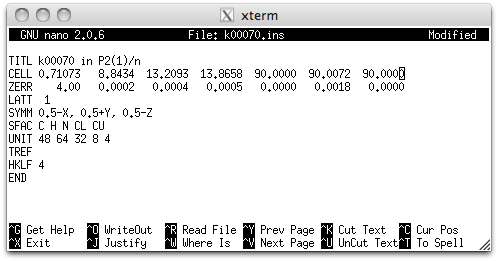
The output from SHELXS indicates a likely solution, but is not especially
impressive.
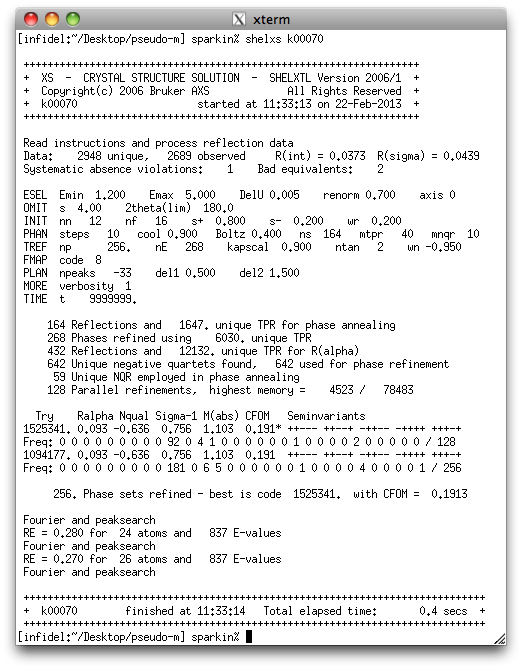
Let's see what it looks like in a graphical editor. We'll use Sheldrick's XP,
but other (more modern) programs exist nowadays, such as ShelXle, Olex2 and the like.
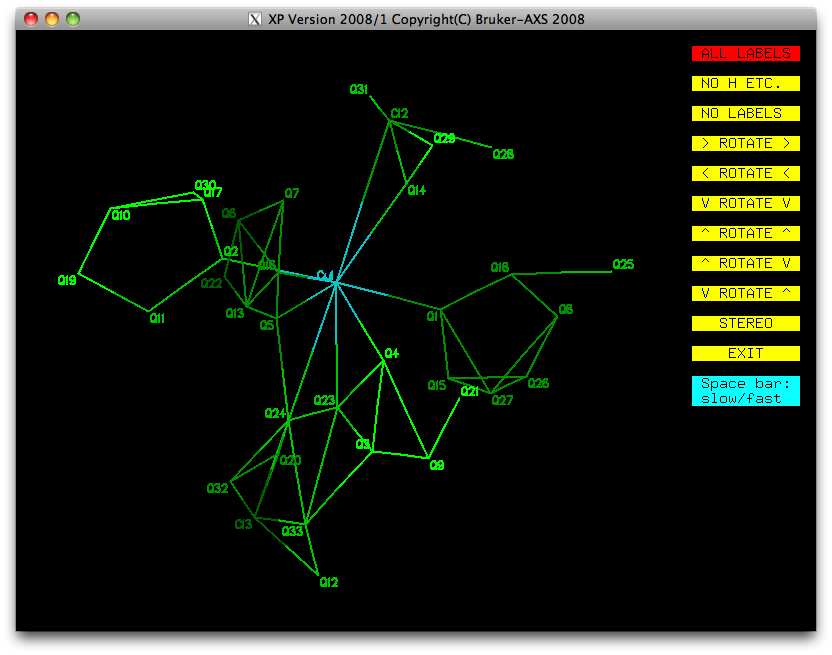
In XP we see a bunch of stuff that looks like plausible imidazole ligands
attached to Cu, but it is pretty ugly.
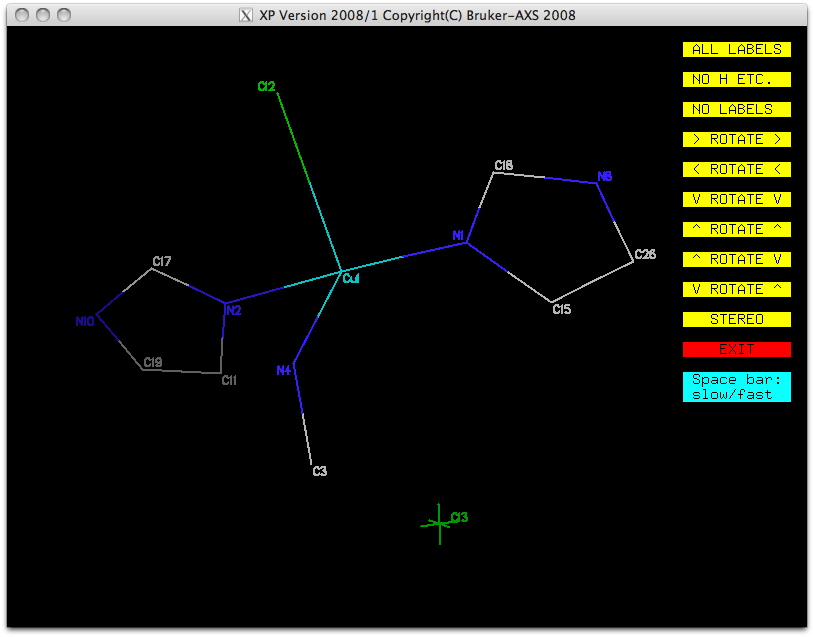
A take no prisoners style edit yields some recognizable fragments, but a lot is
missing.
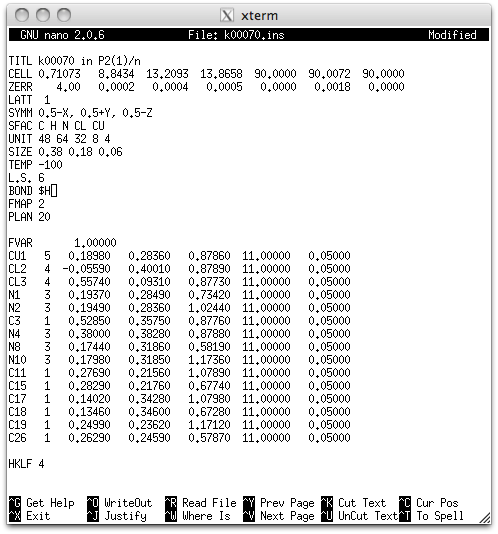
We'll run a refinement job and search for plausible difference map peaks to build
the structure. The edited '.ins' file is above, and the screen output from
SHELXL is below.
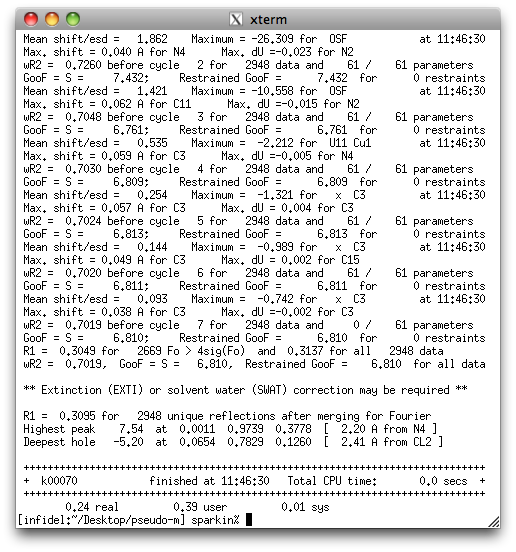
The difference map has large peaks, which is good, because we know the model is
incomplete. Refinement statistics on the other hand (wR2, R1, GooF etc.),
are lousy.
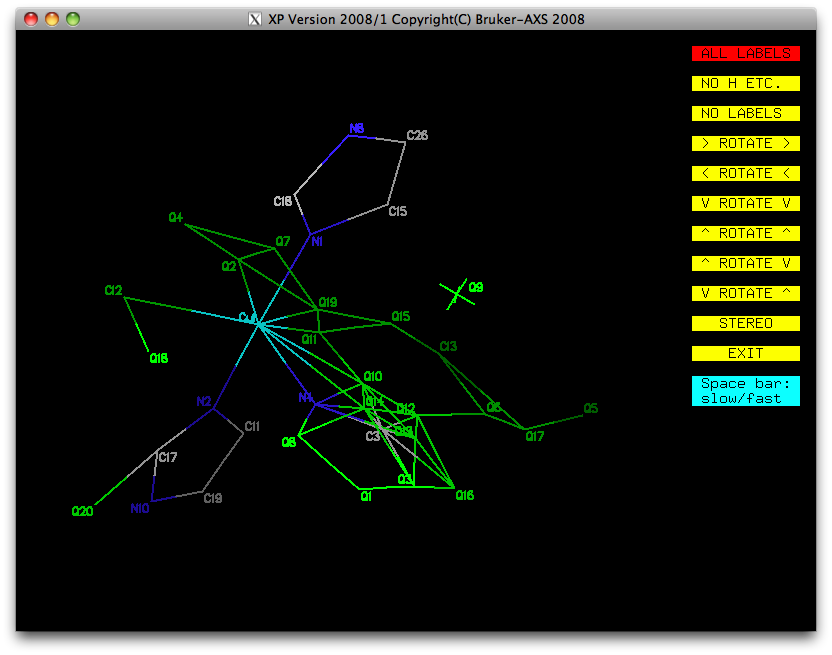
In XP there are a few difference map peaks that could be genuine features,
but there's a lot of noise as well. Chemical intuition guides our editing with the
PICK routine in XP, and gives the following:
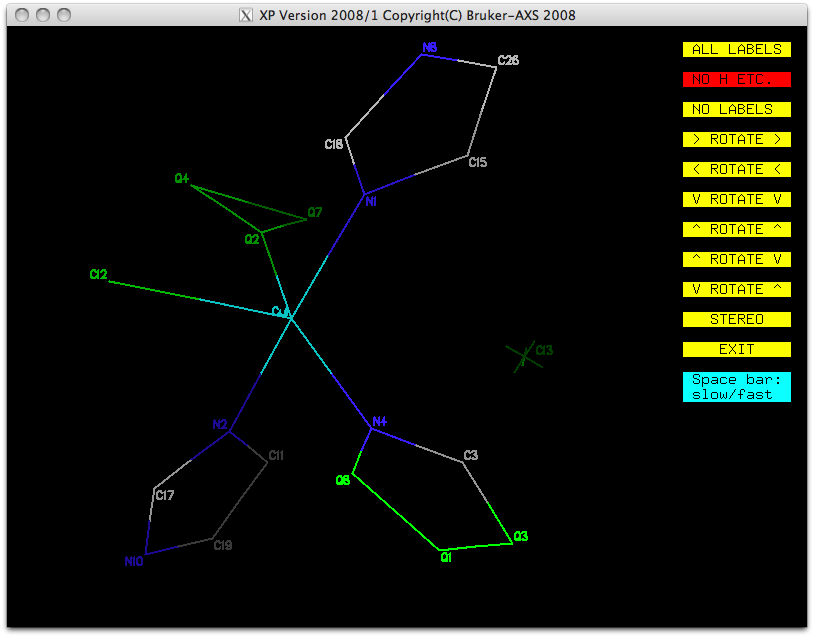
This is good enough to assign tentative atom types ...
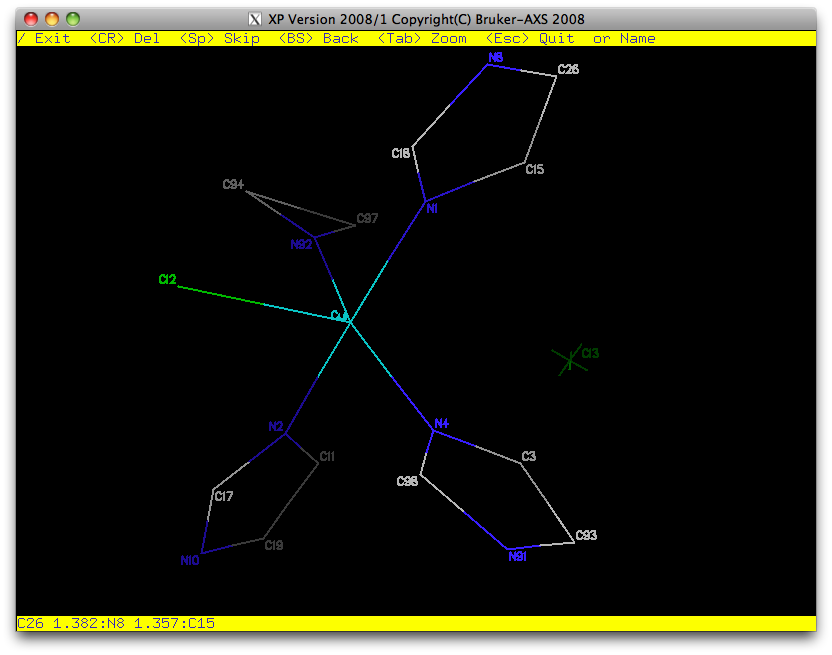
... write out a new '.ins' file ...
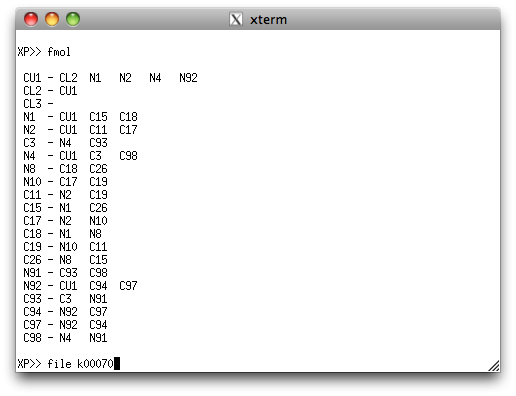
... and run a few cycles of least-squares refinement.
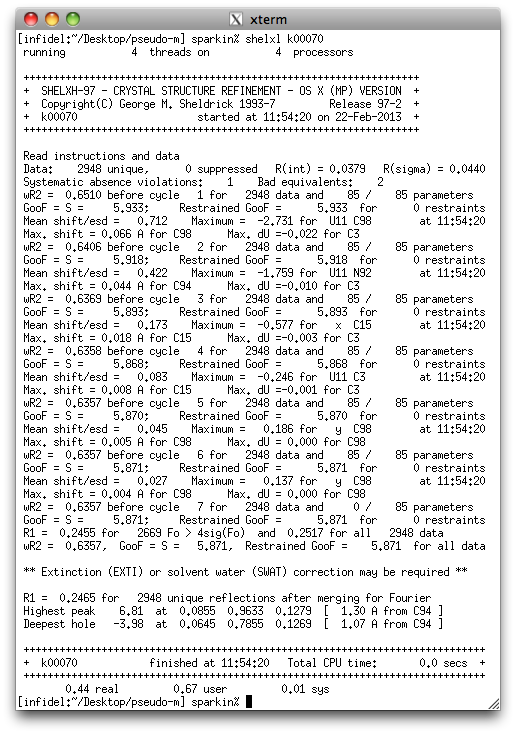
Refinement statistics (R1, wR2 and GooF) are still dreadful. The result does have
enough new information to build a viable model, but the geometry of two of the
imidazole rings is a bit questionable. Still, this is the best we have, so it forms
the basis of the next refinement.
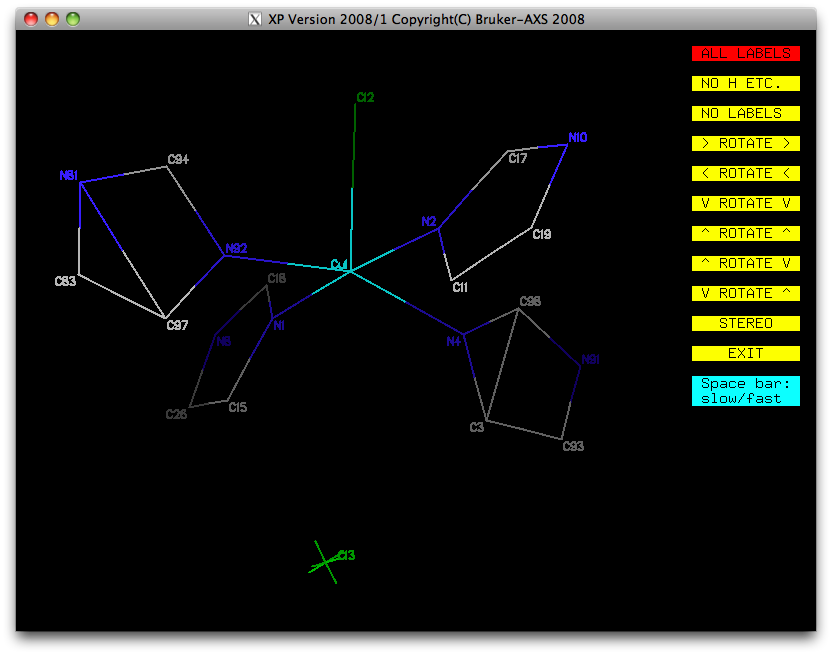
The SHELXL screen output is shown below.
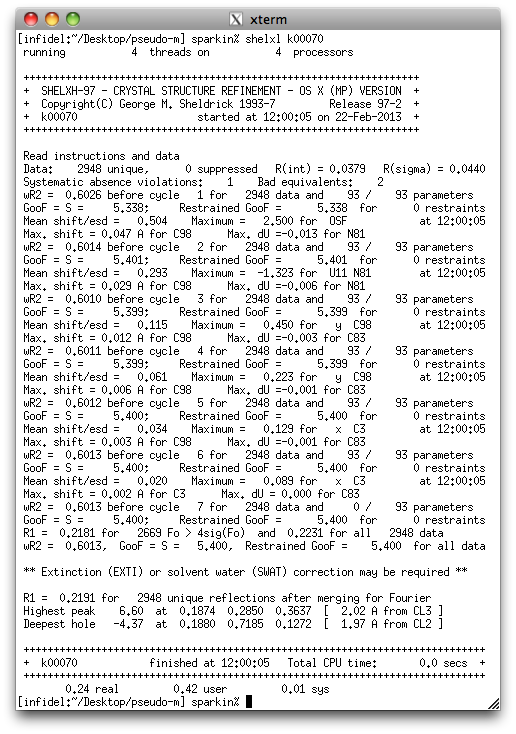
It still does not look very inspiring. The R-values are terrible, and the difference
map has large peaks and troughs.
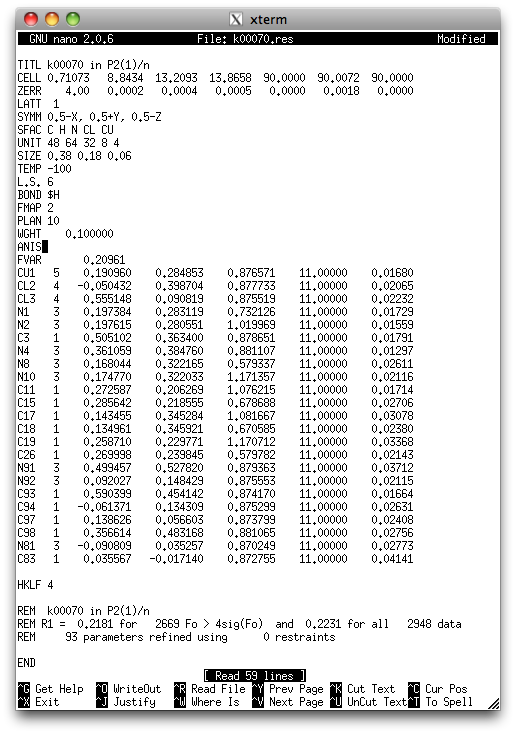
Clearly something is missing. A vain attempt to refine an anisotropic model (command
ANIS in SHELXL) gives the following screen output ...
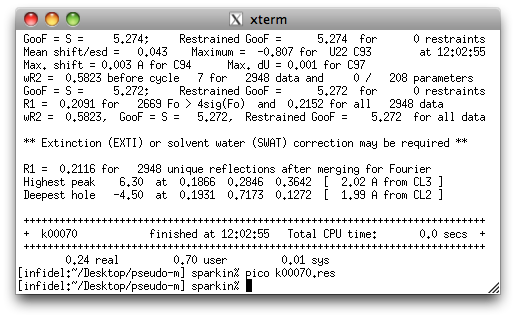
... and a largely complete, but unacceptable model (viewed with Mercury from
the CCDC):
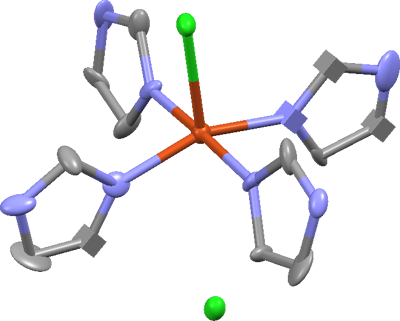
The model shows the gross structure well enough, but the details are far from
satisfactory. Some of the ellipsoids are mis-shapen, and worse still, some are drawn
as little cubes. The little cubes indicate that the (3x3) tensors that describe the
displacement parameters of those atoms are 'non-positive definite'. Translated into
English, that means they do not represent closed ellipsoids. Aside from being ugly,
that's also a physical impossibility. Something is missing from the model, and that
is a description of the twinning. The next section is a preamble to completing the
refinement, in which a plausible twin law is deduced.
1) Assign a space group using XPREP.
2) Direct methods structure solution.
3) Decipher the twin law.
4) Twin refinement with SHELXL.
2) Direct methods structure solution.
3) Decipher the twin law.
4) Twin refinement with SHELXL.
Return to the first page of this tutorial.